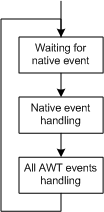
Disclaimer and Legal Information
| Version | Version Information | Date |
| Initial version | Nadya Morozova, Pavel Dolgov: document created. | May 10, 2006 |
Copyright 2005-2006 The Apache Software Foundation or its licensors, as applicable.
Licensed under the Apache License, Version 2.0 (the License); you may not use this file except in compliance with the License. You may obtain a copy of the License at http://www.apache.org/licenses/LICENSE-2.0.
Unless required by applicable law or agreed to in writing, software distributed under the License is distributed on an AS IS BASIS, WITHOUT WARRANTIES OR CONDITIONS OF ANY KIND, either express or implied. See the License for the specific language governing permissions and limitations under the License.
This document introduces the AWT (Abstract Window Toolkit) framework delivered as part of the DRL (Dynamic Run-time Layer) initiative. This document focuses on the characteristics of the current AWT implementation.
The target audience for the document includes a wide community of engineers interested in further work with AWT to contribute to its development. The document assumes that readers are familiar with AWT and the Java* programming language.
This document uses the unified conventions for the DRL documentation kit.
As indicated in the specification [1], the Abstract Window Toolkit (AWT) is a part of the Java* Foundation Classes (JFC). AWT provides basic facilities to develop graphical user interfaces (GUI) and to draw simple graphics for platform-independent applets and applications.
In AWT, GUI consists of components, such as buttons, menus, and top-level windows. One of the main AWT features is that all its built-in components are heavy-weight, that is, every Java* component has a native GUI object behind it. The Swing library [2] is built on the basis of AWT and uses light-weight components, which do not have the 1:1 mapping with native resources.
This document describes major design features and internal
specifics of the DRL AWT implementation. Further in this
document, AWT denotes the DRL implementation for
convenience.
To summarize, DRL AWT has the following key features:
AWT helps applications react to user's actions and traces the system state and the AWT internal state by means of events. Subsequent sections describe the AWT event handling implementation in DRL with focus on the interaction between AWT and the native system, specifically, the GUI subsystem of OS. For information on application events handling, consult the AWT specification [1].
The DRL AWT framework deals with the following types of events:
AWTEvent class and are stored in the AWT
event queue represented by the EventQueue
class.
AWT has the event dispatch thread (EDT) at its basis,
represented by the
class java.awt.EventDispatchThread. This thread
handles all generated types of events by going over the loop
shown in Figure 1. EDT starts on AWT Toolkit creation and
stops on application termination.

Figure 1: Native and AWT Events Handling
In more detail, EDT performs the following event loop:
java.awt.Dispatcher class.
java.awt.EventQueue class.
java.awt.Component.processXYZEvent()
methods.
EventListener interface.
Applications should implement appropriate listeners'
interfaces to react to specific events.
awake() of
the NativeEventQueue interface is called.
This method produces a native auxiliary event so that EDT becomes ready to handle AWT events. EDT
treats this auxiliary event as invisible.
This section defines native events types and the way AWT handles these events based on their type.
Figure 3 below demonstrates how native events can be classified by their role in the AWT framework.

Figure 3: Native Events Classification
Abstracting the Native Platform
Native events handling goes in two stages: the first stage
depends on the native platform, and the second stage is the
same on all supported platforms. Platform-dependent
functionality comprises the Window Toolkit, WTK, in
the org.apache.harmony.awt.wtk package. The
platform-dependent and platform-independent levels cooperate
via three main interfaces of this
package: NativeEventListener, NativeEvent,
and NativeEventQueue, as shown in Figure 2.
Classes implementing the NativeEvent
and NativeEventQueue interfaces are
platform-specific. For example, the NativeEvent
interface is implemented by the
classes LinuxEvent and WinEvent
for the Linux* and Windows* systems respectively.

Figure 2: Interfaces for Abstracting the Native Platform
Classes of the NativeEvent interface convert
information about native events to a platform-independent
format. The NativeEventQueue interface fetches
native events, and the NativeEventListener
interface of the Java* EDT thread handles
native events. In the DRL AWT implementation, native and AWT
events are handled by the single EDT thread. See the Multi-threading Support
section for more information.
The method onEvent() in the
platform-dependent NativeEventListener
interface processes native events. Platform-dependent
classes implementing NativeEventQueue call this
method to handle a relevant native event, see Figure 4.
AWT handles relevant native events by following these steps:
NativeEvent interface translates the
event to a unified format described by the
interface NativeEvent.
NativeEventQueue calls the EDT
method onEvent() and passes the decoded
event as a parameter.
java.awt.Dispatcher
class identifying the type of event.
java.awt.MouseDispatcher works
with mouse
events, java.awt.Dispatcher.KeyDispatcher
processes keyboard events.
The result of native event dispatching depends on the event type: state event, signal or invisible. Signal native events are translated to AWT events explicitly (Figure 4, second column). For state and invisible events, the AWT framework updates the state of the AWT object corresponding to the native object that sent the event. For state events, this implicitly generates an AWT event signaling an AWT object state change (Figure 4, third column). For invisible events, the AWT object state gets updated silently (Figure 4, fourth column).
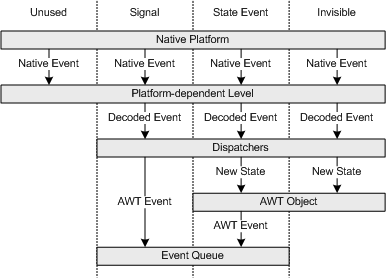
Figure 4: Native Events Handling by Type
Native events often result in new AWT events that need to be handled. This section describes when and how AWT event handlers are called for this purpose.
The Windows* OS generates synchronous and
asynchronous native events, so that AWT must be ready to
handle nested calls to the event handler. In this case, AWT
makes an additional effort to handle AWT events one by one.
DRL AWT uses the WindowProc event handler
inside WTK for interaction with Windows*.
The OS calls this handler for handling any native event in
AWT.
The Linux* event handling mechanism is different with its own method for handling native events. In this OS, all native events are asynchronous and no nesting happens.
Handling a single event
Figure 5 is an example of mouse click event handling in AWT. In the given case, the AWT listener does not co-operate with the underlying native system, and, consequently, no other native events are produced during the listener's operation. The example demonstrates handling an event on Windows*.
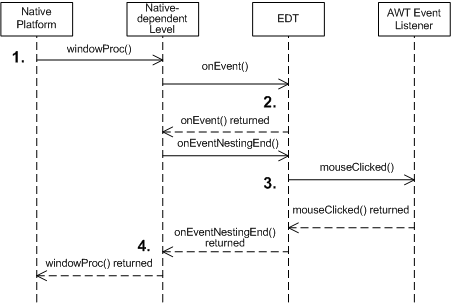
Figure 5: Mouse Click Event Handling
Numbers in the figure above correspond to the following steps in the event handling flow:
WindowProc to handle the native
event. The type of event is determined, information about
this event is gathered and passed to
the onEvent() method
of NativeEventListener.
java.awt.Dispatcher class finds the
appropriate target for this event and posts an AWT event
to the AWT event queue. In this example, it
is MouseEvent.
onEventNestingEnd() is called to
handle all accumulated AWT
events. MouseEvent is fetched from the event
queue and finally dispatched. Listeners of the event's
target are called at this point.
WindowProc returns.
Handling nested events
Figure 6 is an example of mouse click event handling with the event listener requests keyboard focus on the clicked component.
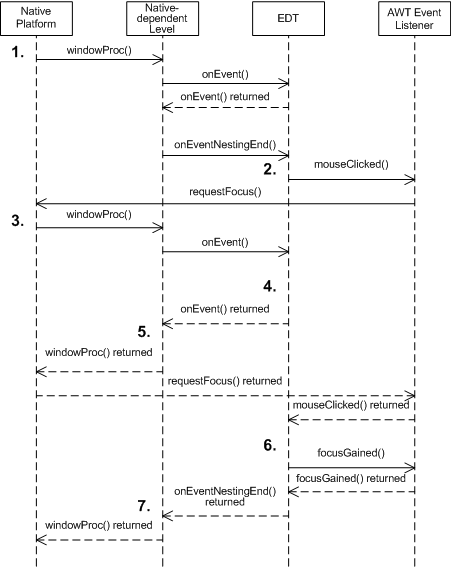
Figure 6: Mouse Click Event Handling with a Nested Event
Numbers in the figure above correspond to the following steps in the event handling flow:
WindowProc, the native event is
transformed into an AWT event and stored in the event
queue.
requestFocus(),
which indirectly results in a native API call.
WindowProc to report the focus
change event. Because the previous call
to WindowProc is not complete yet, the new
call is recognized as nested.
FocusEvent, to the event queue.
WindowProc returns without handling AWT
events because it is a nested native event handler.
onEventNestingEnd() is still
working in the first-level WindowProc
handler. This method fetches and dispatches
the FocusEvent added at step 4.
WindowProc returns.
This technique guarantees that AWT event handlers are called sequentially. The nested native event handler does not attempt to handle pending AWT events. Instead, these events are collected in the event queue to be handled later. The first-level native event handler dispatches all the AWT events waiting in the queue.
The AWT focus subsystem is a set of classes for managing keyboard input focus responsible for:
Win32 or X11, by way of
handling native focus events and making native focus
requests
In the DRL implementation, the focus subsystem functionality is distributed among several internal layers:
The interaction between user code and these levels of the focus subsystem is shown on Figure 7 below.
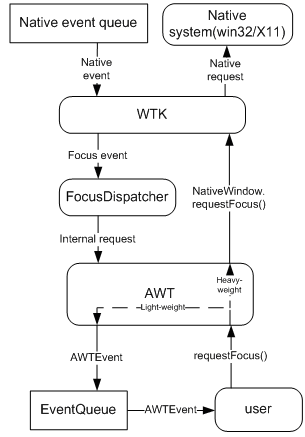
Figure 7. Focus Event Data Flow
The following code entities perform the major focus subsystem tasks:
java.awt.FocusDispatcher class handles
focus events received from the window toolkit level.
KeyboardFocusManager class manage focus
on the higher AWT level.
Subsequent sections describe the levels of focus management in more detail and give specifics of the DRL implementation compared to the focus specification [3].
The focus dispatcher responds to native focus events and, for those relevant to AWT, sends an internal focus change event to the higher AWT level. The dispatcher skips redundant native events and handles event proxying supported on certain native platforms. The focus dispatcher in DRL is characterized by the features listed below.

Figure 8. Focus Proxy
If the active window is the focused window, no proxying occurs. In this case, the nearest heavyweight ancestor of the focus owner or the focus owner native window itself (if focus owner is a heavy-weight component) has native focus.
The higher level of the focus subsystem generates and posts all necessary AWT events to the event queue. This level keeps track of the following focus states:
The AWT level of the focus subsystem handles focus requests
synchronously on every successful focus change request. When
the method requestFocus() is called, the
keyboard focus manager posts all necessary AWT events in the
required order irrespective of the success or failure of the
native focus request. In other words, the AWT subsystem does
not wait until the native focus request gets confirmed and
the corresponding native events are received.
After receiving a notification from the native system, WTK requests the AWT level to update the focus state via an internal request. For example, if the native system reports an unsuccessful focus change, a component might lose focus.
Note
Only certain native focus-related events cause a Java* focus state update. For example:
Window
component itself, in case no child elements are
available.
setFocus(false)
method on the focus owner to clear the focus owner value.
Below, the specific features of DRL implementation are listed compared to the focus specification grouped by their function.
WINDOW_GAINED_FOCUS
event, private methods in the keyboard focus manager set
focus on the appropriate child component of the window.
This document describes the mechanism of drawing standard AWT components with platform-independent Java* means or platform-specific native API or using both approaches.
You can paint standard components in many ways, including
drawing the component parts (text, background, shadows and
all other elements) by the means of
class java.awt.Graphics. Note that the
framework must not paint standard components by the
method java.awt.Component.paint() because it
could be overridden. Instead, when processing a painting
event, the framework calls the package-private
method java.awt.Component.prepaint() just
before calling the method paint().
The prepaint() method does the actual painting
for all standard components by delegating the painting task
to the theme. This approach might not seem optimal, but it
works on all supported platforms without any changes.
The org.apache.harmony.awt.Theme class
implements the default theme. Methods of this class do the
following:
drawButton().
calculateButton().
The default theme class is platform-independent, non-abstract and fully functional, and it usually works when the native theme is disabled or not available, or when the native theme re-uses functionality of the standard theme.
You can create a custom theme that inherits from the default
theme and contains specific features. The current
implementation contains the WinTheme class that
extends the default theme as shown in Figure 9.
To use the native API in your theme, extend the default
theme overriding its painting methods. In the derived theme,
you can use the additional features of specific
implementation of the Graphics class, and
explicitly call native API functions via wrappers,
see org.apache.harmony.misc package for
details. Figure 9 below demonstrates theme-related classes
hierarchy with methods related to the Button
component as an example. A block of code for extending
the drawButton() method is shown in Example 1 below.
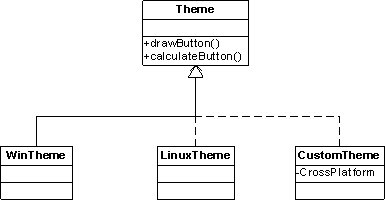
Figure 9: Hierarchy of Theme Classes
After creating a derived theme, turn it on by using the
property awt.theme. This property contains the
name of a subclass of default theme class used as the theme
by all components. If the property points to a non-existent
class or if the required native library is missing, or any
other error occurs, the default theme is used. If the
property is not set, the native theme of the current OS is
used if it exists. If no OS theme exists, the default theme
is used.
To force the default theme, set the command-line
option -Dawt.theme=0. As long as zero is an
invalid class name, this does the job.
Painting standard components requires access to their
internal state, such as the pressed state, the focused
state, the background color, and the contained text. Because
not all these attributes are visible through the public API,
the DRL AWT module provides a set of interfaces to allow the
theme to access private and public data. The
package org.apache.harmony.awt.state contains
these interfaces, such
as, TextState, CheckboxState,
and ButtonState. Each standard component class
has an inner class that implements the appropriate interface
and has the state field of that class declared.
The java.awt.Component class stores all
functionality common for all types of standard components.
Specifically, the java.awt.Component class has
an inner class ComponentState that implements
the org.apache.harmony.awt.state.State
interface. This inner class enables implementing the state
of a specific component by overriding only a few methods.
Standard components delegate the painting and size calculation to the currently active theme and pass their state field value as a parameter to every method of the theme.
Platform-specific and component-specific code is
concentrated in separate helper classes, such
as DefaultButton, the helper to the default
theme, and WinCheckbox, the helper to the
Windows* theme. The theme class contains
only simple methods.
This is an example with the Button component.
public void drawButton(Graphics g, ButtonState s) {
drawButtonBackground(g, s);
drawButtonText(g, s);
}
protected void drawButtonBackground(Graphics g, ButtonState s) {
DefaultButton.drawBackground(g, s);
}
protected void drawButtonText(Graphics g, ButtonState s) {
DefaultButton.drawText(g, s);
}
When designing a custom theme, you may need to override some of these protected methods.
Figure 10 shows an example of component classes relation,
inner states and the inheritance hierarchy of component
state interfaces.
The figure contains short names for convenience, for example,
Component actually means java.awt.Component.
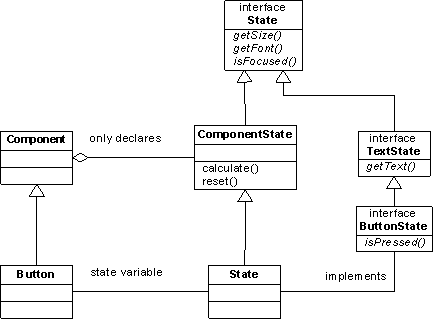
Figure 10: Inheritance and Composition for Components' State
This section illustrates how the state interfaces are used
in the Button component. In DRL AWT, all
standard components follow the same model.
This is a part of the java.awt.Button code that
illustrates how to use visual themes in standard components.
class State extends Component.ComponentState implements ButtonState { … }
final transient State state = new State();
void prepaint(Graphics g) {
toolkit.theme.drawButton(g, state);
}
The framework calls the prepaint() method,
which paints standard components. The painting itself is
done by the theme class, and all the information it requires
is contained in the state variable.
In DRL, the Windows* theme is implemented
by the
class org.apache.harmony.awt.theme.windows.WinTheme,
which inherits from the
class org.apache.harmony.awt.Theme.
The WinTheme class paints components using the
Windows* API
function DrawFrameControl() in the classic mode
and DrawThemeBackground() in the XP mode, and
basic Windows* API painting functions.
The implementation also includes several helper classes:
org.apache.harmony.awt.gl.WinThemeGraphics
has a set of native methods that call the Windows* API. This class is tightly coupled
with org.apache.harmony.awt.gl.WinGDIPGraphics2D,
which is an implementation
of java.awt.Graphics.
The WinThemeGraphics class
queries WinGDIPGraphics2D for the current
clip, translation and device context.
org.apache.harmony.awt.wtk.windows.WinEventQueue.ThemeMap
that handles theme-related native events and opens and
closes handles of native theme data when needed.
org.apache.harmony.awt.wtk.theme.windows
responsible for specific types of components, for
example, org.apache.harmony.awt.wtk.theme.windows.WinButton.
Note
If the Windows* theme does not support the combination of components attributes, it delegates painting to the default theme by calling the super class. For example, the default theme can be used when the background color of a push button differs from the theme setting.
Complying to the specification [1], DRL AWT can work within multi-threaded applications. This implementation ensures consistency of AWT framework data when accessed by multiple threads. For that, AWT synchronizes its key classes.
The main purpose of synchronization is keeping the component hierarchy consistent when component properties are queried and/or modified, so that it potentially affects other components. This includes the parent-child relationships, the child component order, inherited properties, such as the font and the background color, the size and position related properties, as well as visibility, focusable state and other conditions relevant for message handling. Concurrent modifications of these properties can make the AWT framework state inconsistent.
For example, if a thread adds a component to a list of child
components for a container without updating this
component’s field parent, another thread
working with the same component gets the wrong value of
the parent field. Moreover, the second thread
may remove this component from the container children list,
which makes the behavior of the first thread unpredictable.
Synchronization helps avoid such problems.
When a method or a block of code deals with the data that
must not be modified concurrently, a synchronized section is
used. The DRL implementation uses a special monitor AWT
lock more powerful than built-in Java*
synchronized blocks and methods. The AWT lock is similar to
the synchronization tools provided by
the java.util.concurrent package. The
synchronized section using the AWT lock has its own
specifics, as demonstrated by the example below.
Example 2
This example provides an excerpt of code from
the Component class demonstrating a typical
synchronized section in the AWT code. The
methods lockAWT() and unlockAWT()
are the boundaries of the critical section. The code between
them is synchronized by the AWT lock.
final transient Toolkit toolkit = Toolkit.getDefaultToolkit();
…
public Color getBackground() {
toolkit.lockAWT();
try {
if ((backColor == null) && (parent != null)) {
return parent.getBackground();
}
return backColor;
} finally {
toolkit.unlockAWT();
}
}
From the syntactical standpoint, this is a try-finally
structure, which guarantees that
the unlockAWT() method is always called after
doing the useful work in the body of try block. Logically,
it is used as an ordinary synchronized block, except when
using AWT lock extended functionality.
AWT synchronization covers the following classes:
Component, Button,
and Frame
FlowLayout
and GridBagLayout
Toolkit
and KeyboardFocusManager
The total number of synchronized classes nears 40.
Simple data structures, for example, Rectangle
or Point, are not protected from concurrent
modifications for performance reasons.
General rules on how to use synchronized sections
java.awt.Toolkit class.
addNotify() in
the Component and Container
classes.
org.apache.harmony.awt.wtk package must
not use the AWT lock explicitly.
Note
In platform-specific event handling code, the event listener
uses this lock by calling
methods onEventBegin()
and onEventEnd(). These methods
call lockAWT() and unlockAWT()
respectively. This is done to ensure that the dispatcher can
find the event target and that the data is not modified by
another thread.
The org.apache.harmony.awt.wtk.Synchronizer
class implements the AWT lock. The Toolkit
class holds the reference to the synchronizer instance. In a
standalone application, Toolkit
and Synchronizer are singleton classes. In the
multi-context mode, AWT provides
independent Toolkit
and Synchronizer instances per each context.
Figure 11 shows the inheritance relationship of synchronizer classes. The Linux* and Windows* operating systems have their own classes.
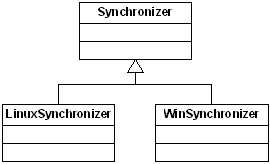
Figure 11: Synchronizer Classes
The base class Synchronizer represents a mutex
with a high-priority event
dispatch thread. All user threads are served in the FIFO
(first in first out) order, whereas EDT has higher priority
and is served in the LIFO (last in first out) order.
Synchronizer for Linux*
AWT uses the Xlib library to access native window resources
on Linux*. The Xlib library is thread-safe
and all user and EDT threads can freely access the native
system through the AWT interface, as shown in Figure 12. As
a result, the
class org.apache.harmony.awt.wtk.linux.LinuxSynchronizer
contains no extensions
to java.awt.Synchronizer.
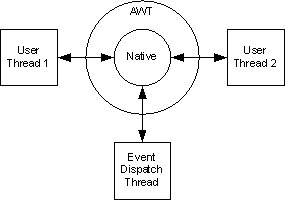
Figure 12: Access to the Native System on Linux*
Synchronizer for Windows*
Synchronization on Windows* is different due to Windows* libraries specifics. Firstly, changing the state of a native window usually produces a synchronous event that reports this change. Secondly, only the thread that created a window receives native events related to that window.
In DRL AWT, the event dispatch thread handles all native events and, consequently, is the only thread that can create windows. EDT also changes the window’s state to simplify the native events handling scheme. Non-EDT threads can create and manipulate native windows by giving tasks to EDT. User and EDT threads cooperation is shown in Figure 13.
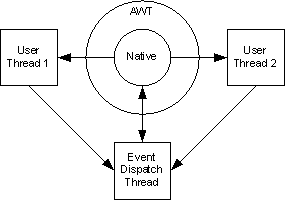
Figure 13: Access to the Native System on Windows* with EDT
The org.apache.harmony.awt.wtk.windows.WinSynchronizer
class, the extension of Synchronizer,
implements the interface NativeServer, which
enables user threads to query EDT for access to native
resources.
However, delegating access to native resources to EDT
requires a more complicated synchronization mechanism. Using
the Synchronizer logic as is results in a
potential deadlock while handling native Windows* events. Figure 14 shows the scenario of the
deadlock.
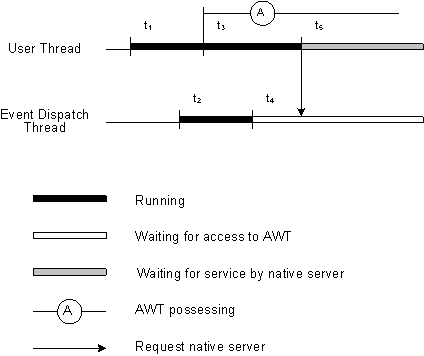
Figure 14: Deadlock with the user thread and EDT
t1: The user thread starts.
t2: EDT starts.
t3: The user thread obtains the AWT lock.
t4: EDT tries to obtain the AWT lock and gets blocked.
t5: The user thread requests a service from EDT via
the NativeServer interface and gets blocked
forever because EDT is blocked too.
The WinSynchronizer class resolves the deadlock
issue by combining the synchronizer’s protocol and the
native server protocol. For that, EDT switches between handling events and providing access to native resources for other running threads, as shown in Figure 15.
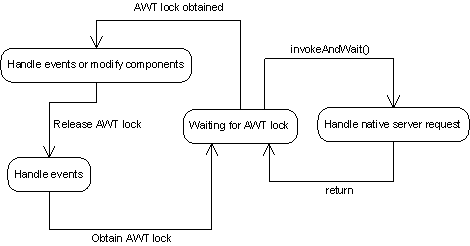
Figure 15. EDT Operation
This algorithm enables detecting a
potential deadlock and resolving it. When EDT is requested
to provide access to native resources while it is waiting to obtain the AWT
lock, EDT awakes, serves the request and resumes waiting.
Serving the native resource request is transparent for the
event-handling side of EDT because this operation is
performed while EDT is inside of lockAWT()
method. The deadlock is resolved, as shown in Figure 16.
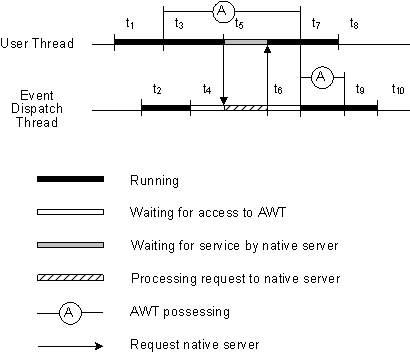
Figure 16: Deadlock Resolution by WinSynchronizer
t1: The user thread starts.
t2: EDT starts.
t3: The user thread obtains the AWT lock.
t4: EDT tries to obtain the AWT lock and gets blocked.
t5: The user thread requests EDT service and also gets blocked. EDT starts processing the request.
t6: EDT finishes processing request. The user thread resumes.
t7: The user thread releases the AWT lock, EDT obtains it.
t8: The user thread may continue its work or exit.
t9: EDT releases the AWT lock.
t10: EDT continues operation.
[1] AWT spec, http://java.sun.com/j2se/1.5.0/docs/guide/awt/index.html
[2] Swing Library Description, http://java.sun.com/j2se/1.5.0/docs/guide/swing/index.html
[3] AWT Focus Subsystem specification, http://java.sun.com/j2se/1.5.0/docs/api/java/awt/doc-files/FocusSpec.html
* Other brands and names are the property of their respective owners.